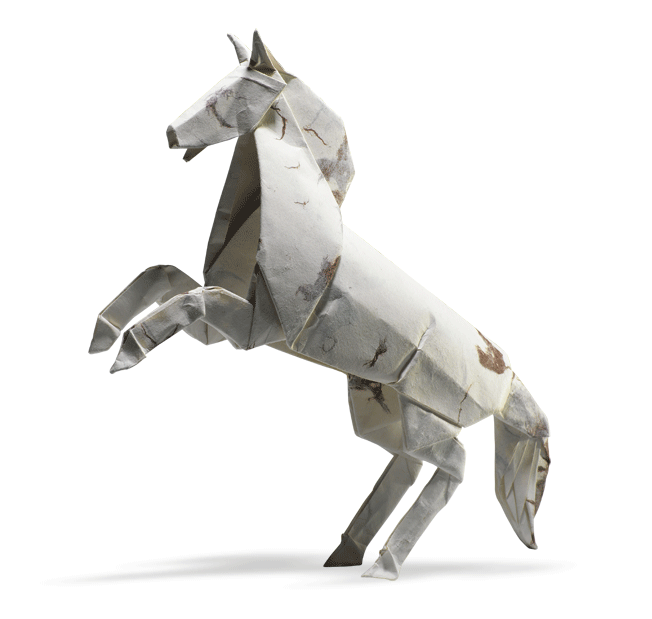

Origami
Fold Everything
 |
By: Jennifer Holland
senior writer at National Geographic.
One sheet, no cuts: Even in its simplest form, origami, the art of paper folding, generates enchantment. Since the earliest known manual, “A Thousand Cranes,” was published in Japan in 1797, flocks of paper birds have alighted on countless windowsills.
But these days, the ancient art is being revitalized by another form of expression: math. By describing their work mathematically and modeling it with computers, origamists have jumped from paper to metal and plastic and from toy to technology. Folded creations have flown in space; someday one may lodge in your artery.
“It’s now mathematically proven that you can pretty much fold anything,” says physicist Robert J. Lang, who quit his job in Silicon Valley eight years ago to fold things full-time, including centipedes with a full set of limbs and snakes with a thousand scales. “We’ve basically solved how to create any appendage or shape.”
Each appendage consists of a folded flap of paper, and each flap, origamists realized in the 1990s, uses a circular portion, or a quarter or half circle, of the original square. It was a crucial insight, Lang says, because it allowed them to connect their basic problem – how to plan creases that will give a sheet of paper a desired shape – to a centuries-old mathematical puzzle: how to pack spheres into a box or circles into a square.
Mining the theory allowed origamists to plot complex designs with lots of limbs and also to find technological applications. When engineers working on the design of car air bags asked Lang to figure out the best way to fold one into a dashboard, he saw that his algorithm for paper insects would do the trick.
“It was an unexpected solution,” he says.
It was not, however, the first practical application of origami. In 1995 Japanese engineers launched a satellite with a solar array that folded in pleats like a map – an easy-opening kind invented by mathematician Koryo Miura – to fit into a rocket. Once in space, it opened flat to face the sun.
Lang has since helped design a space telescope lens the size of a football field that collapses like an umbrella. Only a prototype exists so far, but even that unfolds to nearly 17 feet.
Researchers are also working at the other size extreme, creating origami stents to prop open arteries and boxes made of self-folding DNA, billions of times smaller than a rice grain, to ferry drugs to diseased cells. Talk to one of these modern origamists and you’ll see a new future unfolding. Someday, says MIT’s Erik Demaine, “we’ll build reconfigurable robots that can fold on their own from one thing into another,” like transformers.
And someday, Lang thinks, all the myriad components of a building might be made from the same simple sheets, folded in myriad ways. “We haven’t reached the limits of what origami can do,” he says. “We can’t even see those limits.”